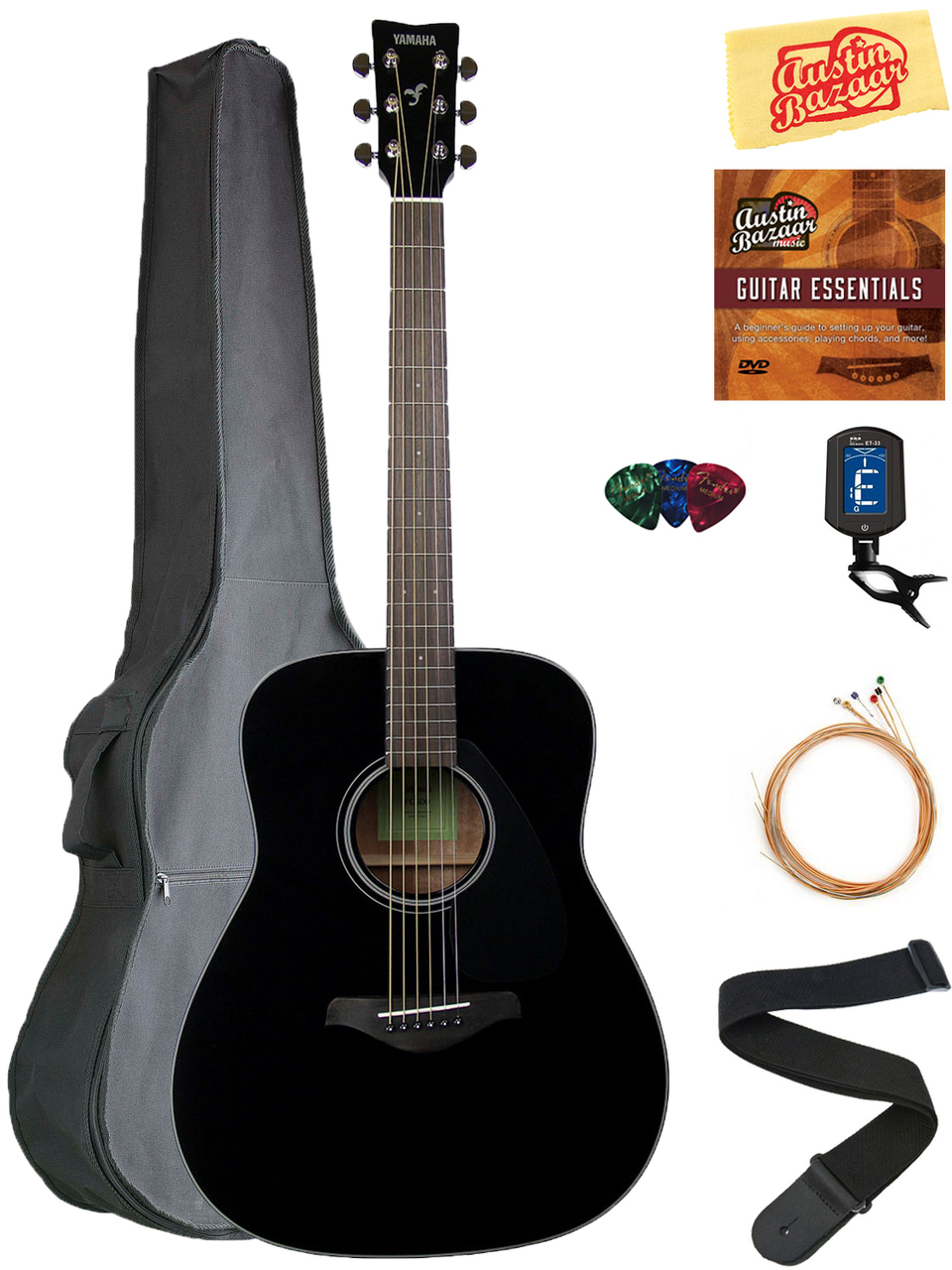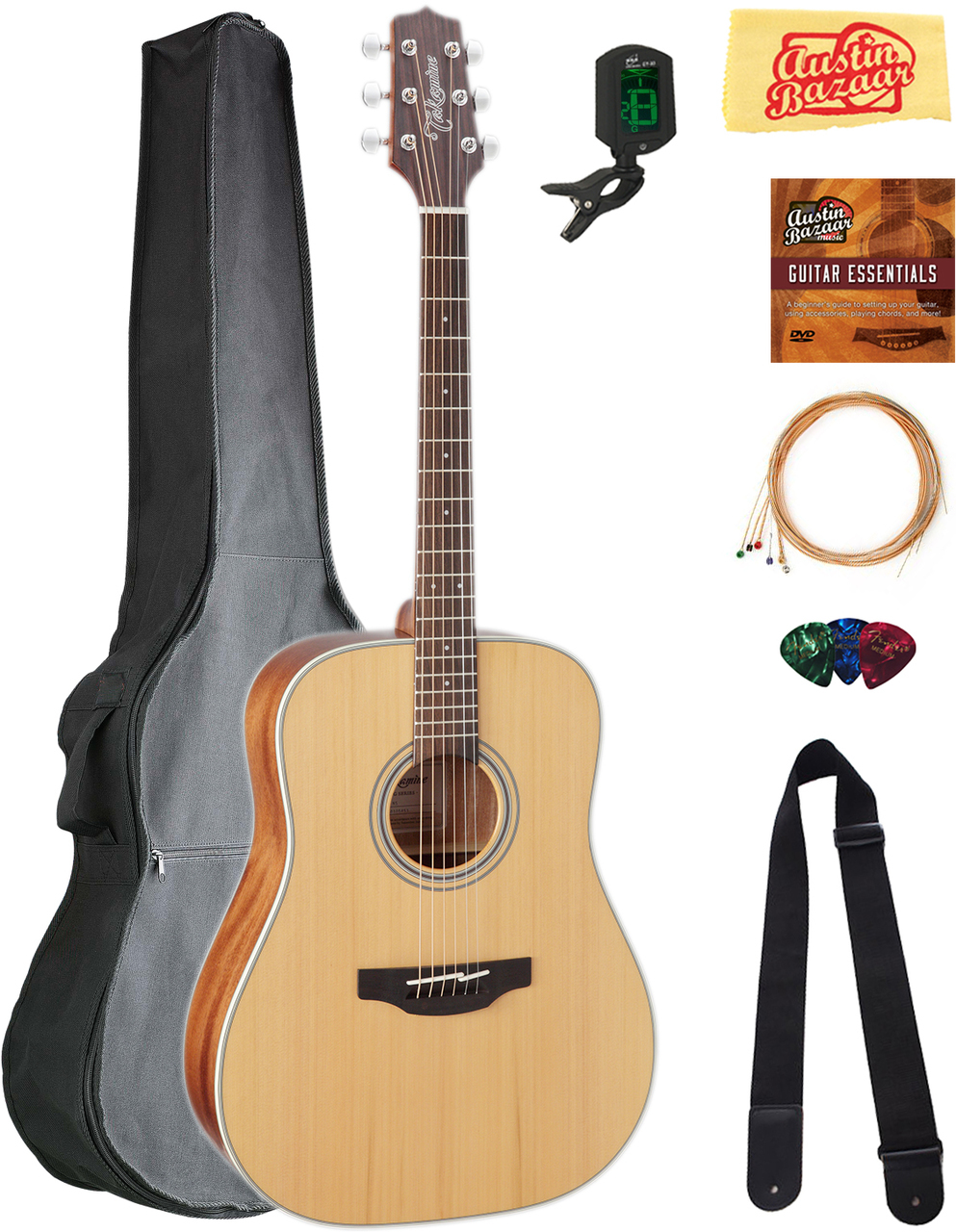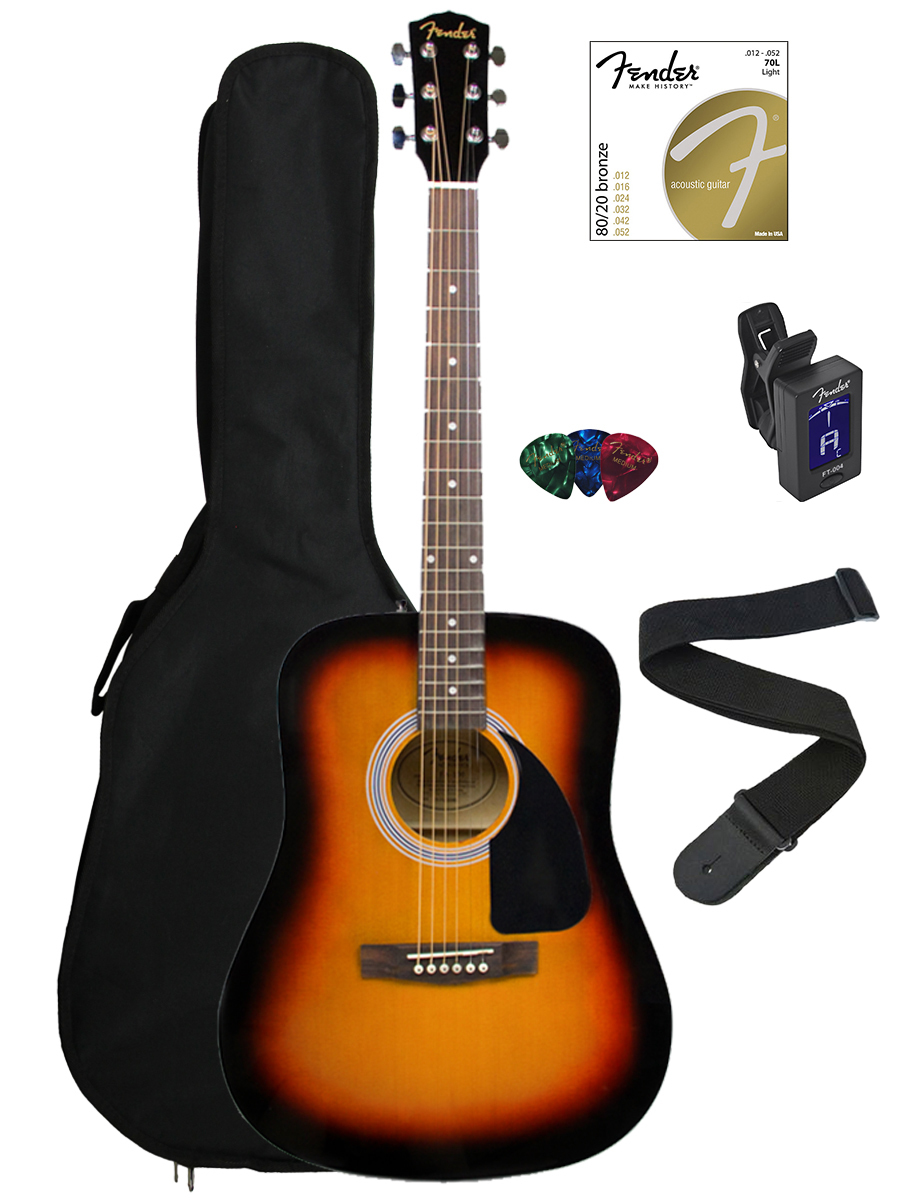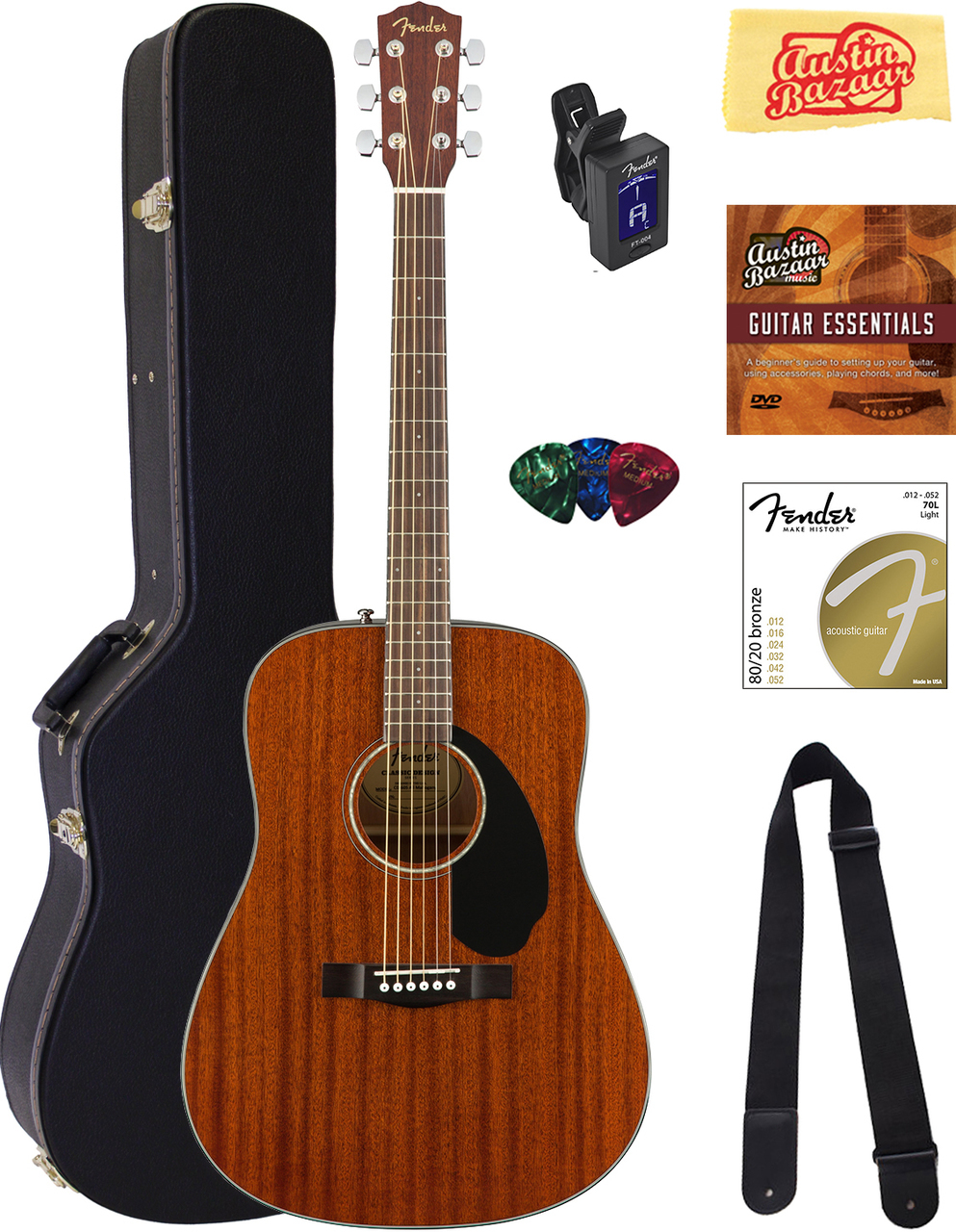Acoustic Guitar Buying Guide
Posted by Austin Bazaar on 19th Dec 2014

If you’re in the market for an acoustic guitar but are feeling overwhelmed by all of the different options available, don’t fret! We’ve put together this acoustic guitar buying guide to help you find the perfect guitar to fit your needs. Read on to find out what you should consider when choosing your first acoustic guitar.
1. BODY STYLE & SIZE
The shape of a stringed instrument has a big impact on what it sounds like, making guitar body style an important factor when shopping for acoustic guitars. In general, deeper and larger guitar bodies produce more bass tones and have greater resonance, while smaller or more shallow bodies tend to produce less volume and low end. Some guitars also have single or double cutaways where the neck meets the body to allow for easier access to the higher frets.
It is also important to take the player's size and comfort into account when choosing your acoustic guitar. For example, children and those with smaller frames may find that the smaller-bodied guitars are easier to play, while those with larger hands and body frames may find the smaller models more difficult to navigate.
Common Acoustic Guitar Body Shapes:
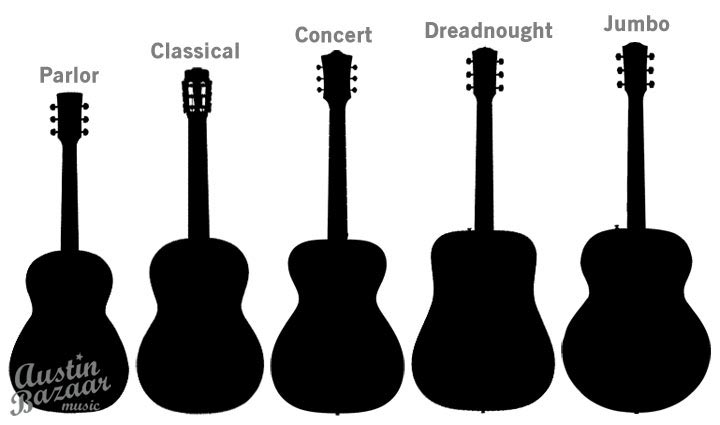
¾ Size and Mini Guitars
Many guitars considered ¾ size or “mini” guitars are simply scaled-down versions of larger models, smaller in size and with shorter fret scales. Because they are smaller and more comfortable to hold, ¾ size acoustic guitars are great for children and those of petite frame.
Parlor
Parlor style guitars first gained popularity in the 1800’s when they were used for intimate performances played in the parlors of people’s homes. These guitars are compact and can be outfitted with either nylon or steel strings. Parlor style guitars tend to produce less volume than larger models and are more well-suited for playing in smaller spaces as an accompaniment to vocals.
Classical
Classical guitars are similar in proportion to parlor style guitars, but tend to be slightly larger in size. They are typically used to play classical music and flamenco, but are also a popular choice for students within academic music programs. Classical guitars feature nylon strings (as opposed to the steel strings found on most modern acoustic guitars) and slotted headstocks with poles that the strings are wrapped around.
Dreadnought
The dreadnought body shape is the most popular for acoustic guitars, with a larger body that lends to more volume and a full, rich sound. Dreadnought guitars are versatile, and though they sound great for strumming, many players use them for fingerpicking as well. These are great for playing with groups, as dreadnoughts tend to be better at cutting through the mix than smaller styles.
Jumbo
As the name suggests, jumbo guitars can be quite large, with bottoms that are more rounded than those found on dreadnought guitars. Having more space in the instrument for sound to resonate translates to more volume, sustain, and bass tones. These are commonly usually used for strumming.
Travel Guitars
Travel guitars are built with the traveling musician in mind, featuring thin, streamlined bodies. Many are small enough to fit into an overhead bin on an airplane while still featuring a full-size scale length.
2. TONEWOOD & FINISH
Aside from body shape, the type of wood used to build a guitar is one of the most important factors in determining how the instrument will sound. Woods used specifically in the production of guitars and other stringed instruments are often referred to as tonewoods, and they are typically chosen based on both how they look and what kind of tone they tend to produce.
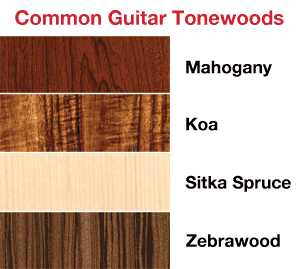
Mahogany and spruce are commonly used in the production of guitar bodies, though you can also find guitars made of more rare, exotic tonewoods like Koa or Cocobolo. Denser woods generally produce warmer, thicker tones while lightweight woods produce brighter tones.
Many guitars have laminate tops, which are comprised of thin layered sheets of wood rather than solid pieces. Laminate top guitars are cheaper to manufacture and are therefore tend to be more affordable, but laminate wood doesn’t vibrate the same way as a solid piece of wood (which in turn will have an impact on the guitar’s tone).
However, many players prefer laminate because of its reliability in changing climates and temperatures. Solid top guitars tend to be more sensitive to the environment they are in.
3. GOALS & PRICE RANGE
Your goals should ultimately help you the most when deciding which guitar is best for you. If you are a beginner, you may want to spend some time learning on a more affordable model before upgrading to something nicer. If you plan on performing, you may want to splurge on a flashier model that will tie in with your band's aesthetics.
Why do some guitars cost more than others?
There are a lot of factors that can make one acoustic guitar more expensive than another. For example, acoustic guitars that are made in America are likely to cost more than those manufactured in factories overseas. Guitars made of exotic tonewoods such as Koa, Cocobolo, and Zebrawood also tend to cost a lot more than those made of more readily-available woods like spruce and mahogany. As mentioned before, laminate top guitars are more affordable than solid-top models but they will never sound the same as a result of their construction.
Save Big with Bundles
One way of saving money when you purchase your first guitar is to get an Acoustic Guitar Bundle which includes essential accessories like picks, strings, and digital tuners at little to no extra cost. That way you save yourself time and hassle and get everything you need to start playing at once. Check out some of our recommended acoustic bundles below.
Recommended Acoustic Guitar Bundles:
Shop Recommended Acoustic Guitar Bundles>>>
Acoustic-Electric Guitars
If you know you want to eventually play live music or record your own music, you may want to consider getting an Acoustic-Electric Guitar with a built-in pickup/preamp system. These allow you to easily plug into an amplifier or PA system like you would with an electric guitar. Pickup/preamp systems on electric acoustic guitars also typically have built-in tuners which is much more convenient than having to buy an external digital tuner.
Aside from being gig-friendly, another benefit of acoustic-electric guitars is that the attached preamps allow you to plug your guitar directly into an audio interface for home recording. This enables you to quickly and easily record your music without having to worry about investing in or setting up microphones.



